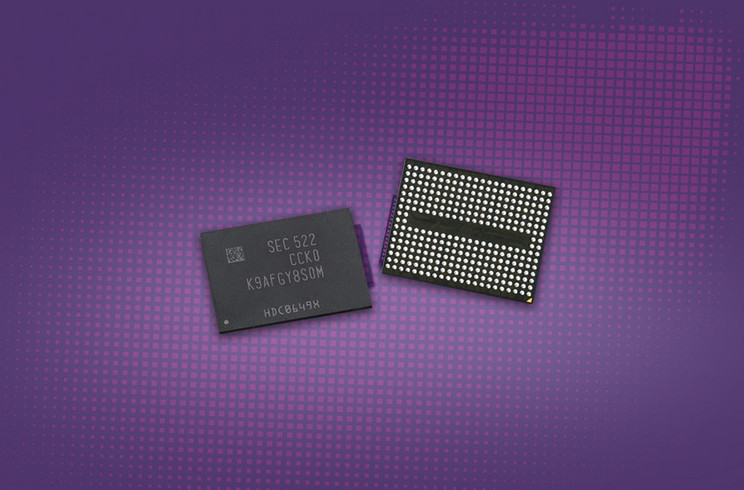The Korean maker of smartphones, memory and other high-tech gadgets Samsung has announced it had begun mass production of the industry’s first 256-gigabit (Gb), three-dimensional (3D) Vertical NAND (V-NAND) flash memory, based on 48 layers of 3-bit multi-level-cell (MLC) arrays for use in solid-state drives (SSDs).
“With the introduction of our 3rd generation V-NAND flash memory to the global market, we can now provide the best advanced memory solutions, with even higher efficiency based on improved performance, power utilization and manufacturing productivity, thereby accelerating growth of the high-performance and the high-density SSD markets,” said Young-Hyun Jun, President of the Memory Business at Samsung Electronics. “By making full use of Samsung V-NAND’s excellent features, we will expand our premium-level business in the enterprise and data center market segments, as well as in the consumer market, while continuing to strengthen our strategic SSD focus.”
The main feature of the new Samsung 256 Gb 3D V-NAND memory is that it doubles the density of conventional 128 Gb NAND flash memory and allows the storage of 32 GB (256 Gb) of data on a single memory chip. This allows the creation of multi-terabyte solid-state drives in the near future. In addition the new memory reduces power consumption by 30 per cent when compared to a 32-layer, 3-bit MLC, 128 Gb V-NAND chip while storing the same amount of data. During production, the new chip also achieves approximately 40 percent more productivity over its 32-layer predecessor, bringing much enhanced cost competitiveness to the SSD market, while mainly utilizing existing equipment.
In the new V-NAND chip, each cell utilizes the same 3D Charge Trap Flash (CTF) structure in which the cell arrays are stacked vertically to form a 48-storied mass that is electrically connected through some 1.8 billion channel holes punching through the arrays thanks to a special etching technology. In total, each chip contains over 85.3 billion cells. They each can store 3 bits of data, resulting 256 billion bits of data, in other words, 256 Gb on a chip no larger than the tip of a finger.
The new memory will be used in a new generation of SSDs, starting in year 2016, when multi-terabyte SSDs are expected to appear at affordable prices.
Source: Samsung
